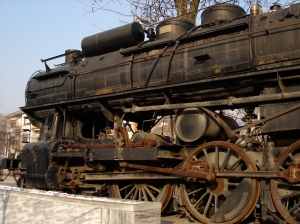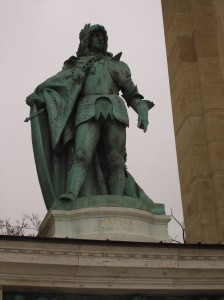When we went to Krakkó we took a side trip to Auschwitz. I felt like it was a very powerful and meaningful experience, particularly Birkenau. At the same time I’ve been trying to figure out for a month what to write about it, because as cliché as it sounds I don’t feel like I can convey the feeling of it. So I’ve decided to just post the pictures with captions. I hope it’s meaningful, if simple.
We went to Auschwitz first. Auschwitz had all the museum information, but most of it was in the buildings where pictures were not permitted. The displays were well done, though.

These were the blocks at Auschwitz where the prisoners slept. One of these buildings was a hospital, another was a prison. There were also buildings outside the main complex for the Nazi officers to live in.
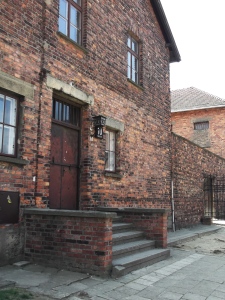
The front of the blocks at Auschwitz. Auschwitz was originally military barracks, so the buildings were at least fairly well done.

Between the prison building and the hospital building was this wall called the death wall. They shot prisoners who had been “tried” here. Most of the victims were Poles. This is a recreation of the wall. The original was torn down.
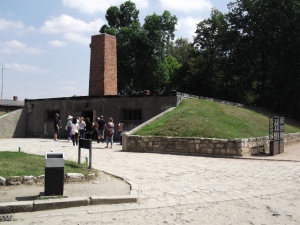
This is the building where the first gas chamber and crematorium was. Later they built bigger ones at Birkenau and these were no longer used. The first experiments with gas were done on Russian soldiers and it took them a long time (I think days) to die. They got better at it later.
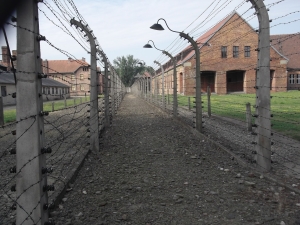
The double barbed wire fence circling the camp. There were signs in German warning anyone outside that it was electric and dangerous.
Then we went to Birkenau. It’s about 5 minutes away and there are free buses to take you there. Birkenau was built to house all the Jews and other prisoners after Auschwitz was full and wasn’t already in existence before WWII. There were brick and wood buildings and there are still examples of each, although most of them were destroyed as the Nazis left and tried to hide what they’d done. Birkenau is also where the gas chambers and crematoria were (except for the one that was used temporarily at Aushwitz) and where the Jews that were sent in on trains specifically to go to the gas chambers were sent.

Most of the buildings where prisoners lived were destroyed and all that’s left are rows and rows of these double chimneys that were inside each building.

Some of the buildings are still standing. This is one of the wood buildings. The chimney in front is all that’s left of the other buildings. In this one you can see the rows of beds in the back. Several people slept on each bed. Toilets were in a separate building.
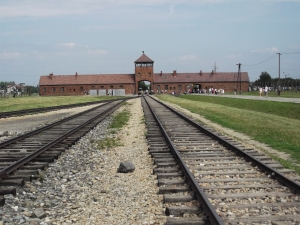
These tracks led through the “death gate” and ended at two of the gas chambers at the back of the camp.
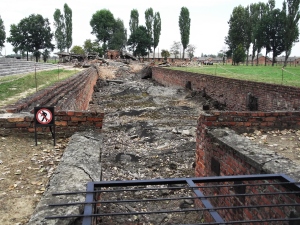
The gas chambers/crematoria were blown up by the Nazis as they left, but the ruins are still there. This is the entrance. The prisoners went in the door and down the steps where they undressed and then were put into the gas chamber. At the end is the room with the furnaces.

There were several dried pools where human ashes were thrown. This one has a memorial stones in English, Polish and Hebrew.
Auschwitz with kids: We went with our kids, but felt like the displays in the barracks at Auschwitz were too graphic for our 4 year old. We tag teamed it, taking turns going in and staying out to watch the kids. It took a lot longer that way, but it worked. Birkenau was no problem with the kids. Unless you know what happened there it’s just a pretty place with lots of grass and some buildings and ruins.
I would also recommend going early. They make you go with a tour after 10 (sometimes earlier) and I much preferred wandering at our own pace, and a tour wouldn’t have worked with the kids. With older kids it would probably be okay and in the Winter they don’t make you take a tour.


